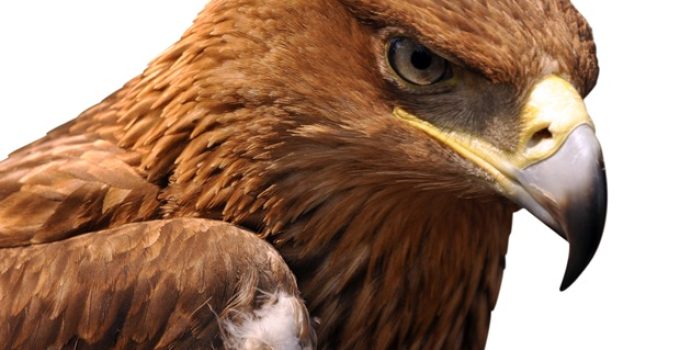How Far Can Eagles See?
Eagles can see up to 2 to 3 miles away in ideal conditions. Their extraordinary long-distance vision allows them to spot prey, avoid threats, and navigate large territories from high altitudes. This visual superpower places them among the most visually acute animals on Earth—far exceeding the eyesight of humans and most other predators.
Dive Deeper
- How Far Can an Eagle Actually See?
- What Gives Eagles Their Long-Distance Vision?
- How Do Eagles Use Long-Range Vision in the Wild?
- How Does Eagle Vision Compare to Human Vision?
- 🎯 Final Thoughts
- 📚 References
🦅 How Far Can an Eagle Actually See?
In ideal conditions (clear skies, open terrain), an eagle can spot a rabbit or other small mammal from about 2 miles (3.2 kilometers) away. This incredible range comes from a combination of extreme clarity, magnification, and sensitivity to motion.
| 📏 Statistic: Eagles can detect prey the size of a tennis ball from an altitude of 1,000 feet—roughly a 10-story building in height [1].
This ability makes them elite aerial hunters. When soaring at several hundred feet, they can visually scan vast landscapes for food, rivals, or threats.
🔭 What Gives Eagles Their Long-Distance Vision?
Eagle eyes are not just sharp—they’re structurally advanced. Several features contribute to their phenomenal range and clarity:
- Large eye size: Nearly as large as a human eye, but more powerful relative to body size
- High photoreceptor density: Up to 1 million cones per square millimeter in the retina (humans have around 200,000)
- Double fovea: Each eye has two areas of sharpest focus, one for forward vision and one for peripheral scanning
- Flattened foveal shape: Creates a telephoto effect, enhancing focus on distant objects
| 🔬 Interesting Insight: Because of these adaptations, scientists estimate eagles have 20/5 or 20/4 vision, meaning they can see at 20 feet what a person with normal vision sees at 5 feet [2].
🌎 How Do Eagles Use Long-Range Vision in the Wild?
Eagles depend on their eyesight for nearly every aspect of survival:
- Hunting: Spotting fish near the water’s surface, rodents in open fields, or rabbits hiding in brush
- Territory surveillance: Monitoring intruders or threats from high perches
- Navigating migration routes: Identifying landmarks from miles away
- Raising young: Watching for predators near the nest
Some eagle species—like the bald eagle—perch for hours, scanning with minimal movement until they launch into a dive.
| 🧠 Behavioral Note: Golden eagles often hunt in mountainous regions where elevation allows them to see prey over great distances, making stealth and surprise attacks more effective.
📊 How Does Eagle Vision Compare to Human Vision?
| Visual Feature | Eagle | Human |
|---|---|---|
| Visual acuity | 20/5 to 20/4 | 20/20 (normal vision) |
| Fovea | 2 per eye (binocular and peripheral) | 1 per eye (central focus) |
| Cone density | ~1,000,000/mm² | ~200,000/mm² |
| Detection range | 2–3 miles (prey-sized object) | 0.5–1 mile (large object) |
| UV light sensitivity | Yes (some species) | No |
| Field of vision | ~340° combined | ~180° combined |
| 📈 Statistic: With two foveae per eye, eagles can track a moving object and scan their surroundings at the same time—a rare dual focus ability not found in humans [3].
🎯 Final Thoughts
So, how far can eagles see? Farther than nearly any other creature on Earth. Their eyesight is so sharp it borders on the extraordinary, allowing them to detect prey, monitor rivals, and patrol vast territories with pinpoint accuracy. This vision is a cornerstone of their survival—and part of what makes them such powerful apex predators. Whether soaring over forests or perched on cliff edges, eagles remain nature’s long-distance visionaries.
📚 References
- Martin, G. R., & Katzir, G. (1999). “Visual Fields in Short-Toed Eagles.” Vision Research, 39(1), 33–39. https://doi.org/10.1016/S0042-6989(98)00147-0
- Reymond, L. (1987). “Spatial visual acuity of the eagle eye: A behavioural, optical and anatomical investigation.” Vision Research, 27(4), 597–612. https://doi.org/10.1016/0042-6989(87)90047-1
- Potier, S., et al. (2018). “Visual acuity in birds of prey: Resolution limits of single cells and binocular vision.” Journal of Comparative Physiology A, 204(1), 25–32. https://doi.org/10.1007/s00359-017-1214-0
